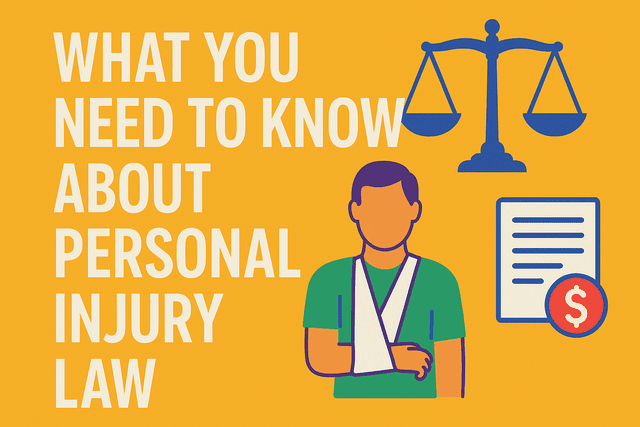
What You Need to Know About Personal Injury Law
Personal injury law is a crucial safeguard for individuals harmed by another’s negligence or intentional actions. This field allows victims to pursue compensation for losses ranging from medical bills to emotional distress, ensuring those at fault are held accountable. Whether injuries arise from car accidents, workplace incidents, or unsafe products, understanding your rights and the legal process is essential. Handling these claims can be complex, making a foundational knowledge of personal injury law invaluable for anyone seeking justice.
Table of Content
1. The Foundation of Personal Injury Law
Personal injury or tort law is designed to compensate individuals harmed physically, emotionally, or financially due to someone else’s negligence or wrongful conduct. The central idea is to restore the injured party to their position before the injury occurs.
2. Common Types of Personal Injury Cases
Compensation for personal injury and medical bills can be sought in various situations. Car accidents, slip-and-fall incidents, industrial injuries, medical negligence, and accusations of defective products are among the most frequent cases. In these scenarios, the injured party may pursue compensation from the at-fault party, an individual, a company, or a government entity to cover damages such as medical expenses, lost wages, and other losses.
3. Proving a Personal Injury Claim
For a personal injury claim to succeed, certain legal elements must be established;
- Duty of Care
The defendant was legally required to treat the plaintiff fairly and safely.
- Breach of Duty
The defendant did not fulfil this duty.
- Causation
The breach directly resulted in the plaintiff’s injury.
- Damages
As a result, the plaintiff experienced real harm, whether financial, emotional, or physical.
Negligence is the most common basis for personal injury claims. However, intentional acts and strict liability, where fault does not need to be proven, can also form the basis of a lawsuit.
4. The Claims Process
The process usually starts by gathering supporting documentation for the claim, such as witness accounts, medical records, and photographs. Most personal injury lawsuits end with settlement talks with the at-fault party’s insurance provider. If a just settlement cannot be reached, the matter may go to trial, and a judge or jury will decide the case’s fate.
5. Types of Compensation Available
Compensation for the following can be obtained through successful personal injury claims:
- Medical expenses.
- Lost wages and diminished earning capacity.
- Pain and suffering.
- Emotional distress.
- Property damage.
Punitive damages are occasionally granted to penalize, especially heinous behavior and discourage future occurrences of the same kind.
6. Time Limits and Legal Guidance
Every state has a deadline for bringing a personal injury claim and a statute of limitations. Missing this deadline can bar your right to recover damages entirely. Speaking with an experienced lawyer is frequently essential due to the intricacy of personal injury law, particularly in cases where responsibility is ambiguous, or injuries are serious.
Final Thoughts
Personal injury law is a vital safeguard, ensuring those harmed by another’s actions have a path to justice and compensation. While the process can be complex, understanding its core principles of duty of care, negligence, damages, and timely action empowers individuals to make informed decisions after an injury. If you face such a situation, knowing your rights and the legal remedies available can make all the difference in your recovery and peace of mind.


